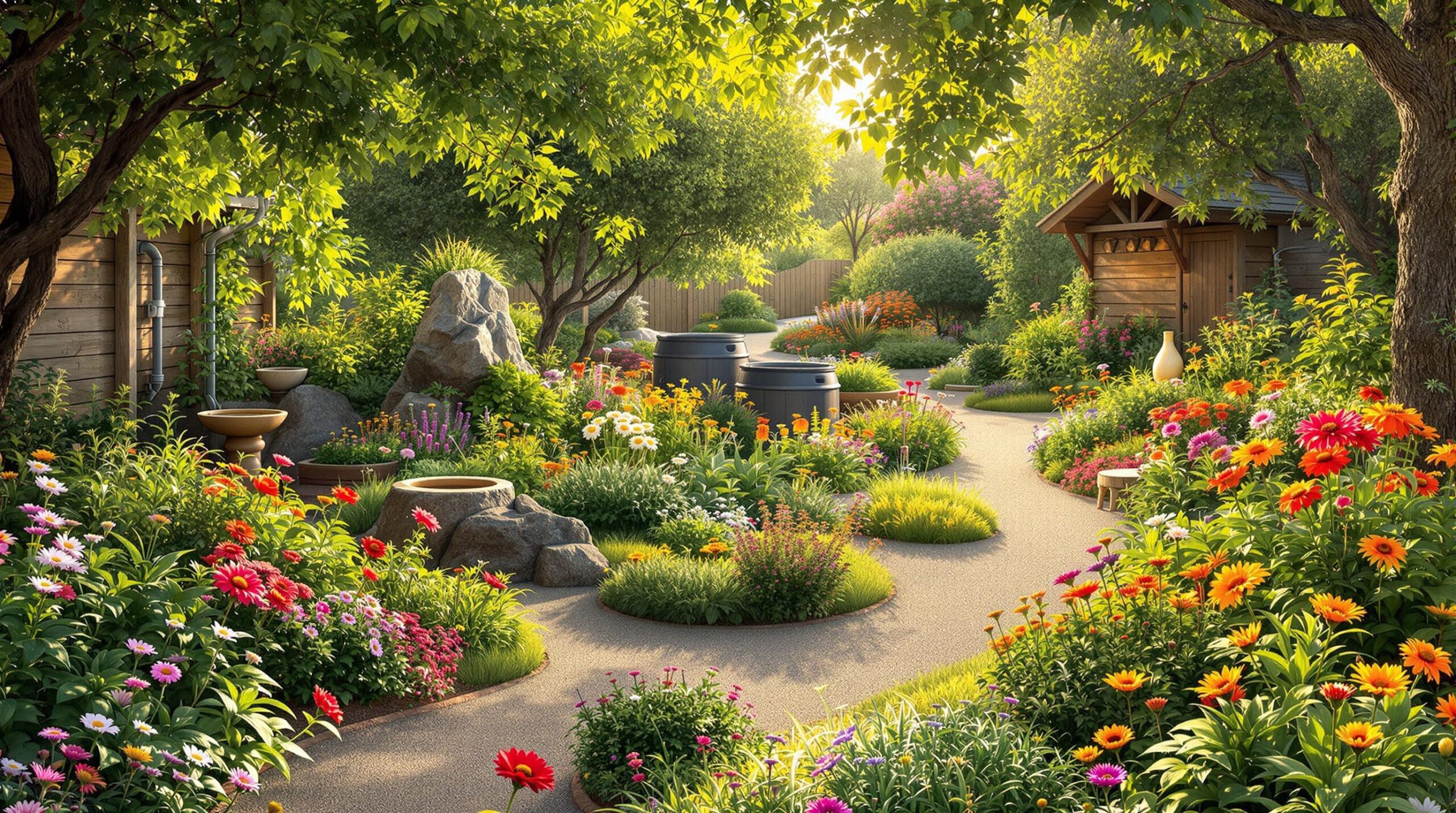Imagine transforming your outdoor space into a flourishing sanctuary that not only enhances your home’s aesthetic appeal but also nurtures the environment. Creating a sustainable garden design is more than a trend; it’s a commitment to fostering biodiversity and embracing practices that support local ecosystems. By choosing native plants and utilizing eco-friendly techniques, you can cultivate a space that thrives while minimizing your carbon footprint. As we venture into 2025, it’s time to explore actionable steps and inspiration for establishing your own eco-conscious landscape.
Understanding the importance of native plants in garden design
When it comes to sustainable gardening, incorporating native plants is crucial. These species are adapted to your local climate, soil, and conditions, making them more resilient and less resource-intensive. As Tim Heneveld, a garden expert, emphasizes, “Think local. The goal is to work with your environment, not against it.” By selecting plants that naturally thrive in your area, such as the vibrant Douglas iris or the hardy little bluestem grass, you foster an ecosystem that supports pollinators and wildlife.
Benefits of using native flora
- 🌱 Drought resistance: Native plants typically require less water and survive periods of drought.
- 🦋 Wildlife attraction: By planting native species, you provide essential habitats and food sources for local fauna.
- 💧 Environmental efficiency: Native plants help conserve water and improve soil health, reducing the need for chemical fertilizers.
For those curious about the best plants for their location, resources like Native Seed Search can provide tailored advice and local plant lists. This ensures that your garden design aligns with the natural beauty found in your surroundings.
Design principles for a sustainable garden
Effective planting design means not only selecting the right flora but also considering the structure and layout of your garden. Tim advocates for utilizing local materials—think stone pathways and wooden features—to create a cohesive and natural look. The aim is to craft a space that serves as a habitat while being visually appealing.
Utilizing natural materials
Incorporating natural elements such as locally sourced stone and timber not only strengthens your garden’s connection to the landscape but also supports sustainable practices. For example, consider using reclaimed wood for raised beds or paths constructed from naturally occurring stones in your area. Not only does this save costs, but it also minimizes the environmental impact of transportation.
Organic maintenance techniques for your garden
Once your sustainable garden is established, maintaining it organically is essential. Avoiding chemicals ensures a healthy ecosystem. Valeria Nyman, a gardening expert, advises, “To create a native landscape, avoid pesticides and chemicals at all costs.” Instead, embrace organic practices such as composting and mulching to nourish your garden naturally.
Effective organic practices
- ♻️ Composting: Use kitchen scraps spiced with EcoScraps products to create rich soil amendments.
- 🌾 Mulching: Organic mulch helps retain moisture and suppress weeds.
- 🥕 No-dig gardening method: This technique improves soil health while minimizing labor and maintenance.
Transforming your backyard: Effective garden landscaping ideas for 2025
Creating a wildlife-friendly environment
To maximize biodiversity, consider integrating wildlife-friendly features in your garden. Valeria suggests adding bee hotels, birdhouses, and creating dead wood piles to attract various species. This approach not only enhances the garden’s beauty but also engages visitors with the vibrant life it supports. A simple birdbath or mini pond can serve as a crucial water source for passing wildlife.
Attracting beneficial wildlife
Incorporate habitats that invite pollinators and songbirds into your garden. Providing diverse landscapes ensures a thriving ecosystem:
– 🦜 Perches or bird feeders to draw in feathered friends.
– 🐝 Pollen-rich plants to maintain healthy bee populations.
Bringing it all together
As you envision your sustainable garden design, remember that it’s about enhancing your outdoor space while respecting and nurturing the environment. With guidance from experts and innovative sustainable gardening solutions from companies like Gardener’s Supply Company and Greenhouse Megastore, creating a sustainable oasis is both achievable and rewarding.
FAQ
How can I start a sustainable garden in a small space?
Even in tight areas, like balconies, use compact native plants or vertical gardens to maximize biodiversity and beauty.
What are the best native plants for my region?
Utilizing resources like Native Seed Search can help you select the most suitable flora for your area.
How can I maintain my native garden sustainably?
Focus on organic practices and avoid synthetic chemicals, using compost and natural pest repellents to keep your garden healthy.
What features should I add for wildlife protection?
Create diverse habitats by adding water sources, nesting sites, and a variety of native plants to attract different species.
Where can I find sustainable gardening resources?
Look for articles on platforms like Gardenista and sustainable workshops at local gardening centers to expand your knowledge.
| Plant Type | Benefits | Regional Adaptation |
|---|---|---|
| Douglas Iris 🌸 | Attracts pollinators | Pacific Coast |
| Little Bluestem 🌿 | Drought resistant | Great Plains |
| California Fescue 🌱 | Low maintenance | California |


















